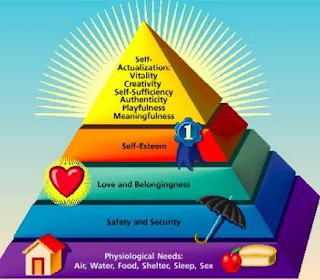But before we do, its worth mentioning the benefits of motivating and empowering employees. Studies show that high employee motivation is correlated to high organizational performance and higher profits. In fact, consider the following findings by the Gallup organization:
When all of an organization's employees are highly motivated,
- performance is near peak
- customers are 70% more loyal
- turnover drops by 70%, and
- profits jump 40%!
So how does the leader fit in? In a perfect world, we would all be motivated both intrinsically (internally) and extrinsically (externally) by our work, and that work would then align with the mission and structure of a company. Everyone happy, everyone motivated, company profitable. But it is not a perfect world, so the task of the leader is to create as much alignment as possible between rewards for the employees (which motivate them intrinsically and extrinsically), and the direction and viability of the company.
This is no simple task.
The first step for the leader is to consider how basic human needs (for example, those outlined by Maslow) translate into the workplace. Let's take a look. (thanks to Richard Daft for the following)
Need How it can be fulfilled in the workplace
Self-Actualization Opportunities for advancement, autonomy, growth, creativity
Esteem Needs Recognition, approval, high status, increased responsibilities
Belongingness Needs Work groups, clients, co-workers, supervisors
Safety Needs Safe work, fringe benefits, job security
Physiological Needs Heat, air, base salary
A leader consciously works to satisfy the needs on the right for employees while working toward company objectives. The more categories of needs on the left that are fulfilled, the more motivated the employee base.
Finally, a distinction needs to be made between "conventional management" and "leadership" in approach. Conventional management works on the basis of lower needs, using a carrot and stick approach to control people. This results in only basic effort on the part of employees- just enough to not get fired. In contrast, the leadership approach focuses on higher needs, using empowerment to achieve growth and fulfillment in employees, which results in best effort (and all the bottom-line benefits mentioned above.
Take the high road. Meet the higher needs. Reap higher profits.



No comments:
Post a Comment